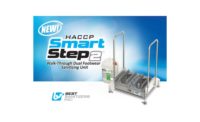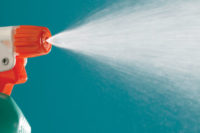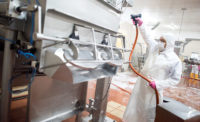The sanitizers used to keep meat and poultry plants free of foodborne diseases are necessarily harsh, and also dangerous at times. In 2013, Tyson Foods settled with the U.S. Department of Justice over allegations that the company was violating various regulations related to anhydrous ammonia at its plants from 2006 to 2010, and injuring more than a dozen employees by exposing them to dangerous levels of ammonia.
While Tyson contested many of the government’s charges, it did pay a civil penalty, create a new risk-management program and provide funds for emergency response equipment in its communities.
“Sanitizing chemicals are meant to remove protein and fat, which is what we’re made of too, so they are aggressive and dangerous to employees,” says John Marcy, Ph.D., extension food scientist, University of Arkansas, Fayetteville, Ark. “But I don’t know a substitute for them. I don’t see any easy answers out there.”
Starting with the basics
At least one industry source says there simply hasn’t been a non-chemical sanitizer developed that is as equally effective as chemical cleaning, and that source still suggests processors use hydrogen peroxide-based cleaning.
“Hydrogen peroxide can be used in combination with caustics or acids to aid in cleaning of fats from surfaces or biofilms in CIP [clean in place] lines,” the source says. Additionally, when combined with quaternary ammonium cations (quat), a per-quat intermediate is formed, which is very effective against biofilm.
Chlorine is also a well-known and used sanitizer, besides being one of the least expensive sanitizers available, but employees need to know how to work with its pH levels, says Marcy.
“One point I think is critically important with new and novel ideas related to new sanitizers etc., is that no matter what ‘new’ things we have, you have to get rid of the protein and fat residue [on equipment and in the plant],” says Robert Delmore, Ph.D., a professor at the Center for Meat Safety and Quality, Colorado State University, based in Fort Collins, Colo. “Otherwise you are just wasting sanitizer.”
Taking another look at silver
Silver is being promoted as the first new antimicrobial in decades. Technically, it’s been used as a disinfectant since Alexander the Great was said to use coins to clean his water. But with the advent of penicillin and antibiotics in the 1950s, silver lost some of its allure as a healing and cleaning agent. Now that consumers are worried about antibiotic-resistant bacteria, silver’s properties are being re-examined.
Silver ions kill bacteria by attaching to proteins on their cell membranes, interfering with their respiratory chains, opening the cell and destroying it. They can also replicate this process on viruses and fungi too.
Killing bacteria vs. cleaning
Non-chemical cleaners such as steam, dry ice, vacuum and ultraviolet (UV), etc., are widely used in a dry-environment plant, while wet steam heats faster to kill bacteria, but can lead to equipment corrosion and affect its electrical components over time, Marcy says.
“Heat always kills bacteria, but it doesn’t clean equipment,” he says. “However, it can reach areas that employees can’t see. For example, spiral freezers or big slicers can be heated up overnight to 180 degrees F to kill any bacteria on them.”
Electrolyzed waters are another non-chemical method, which form chemical intermediates without the use of other reagents. It is another way to basically generate household bleach in usable form, although the machinery is expensive, Marcy says. Also, viruses and high-pressure processing are other chemical-free sanitization methods being used or tested today on products, he adds.





Report Abusive Comment